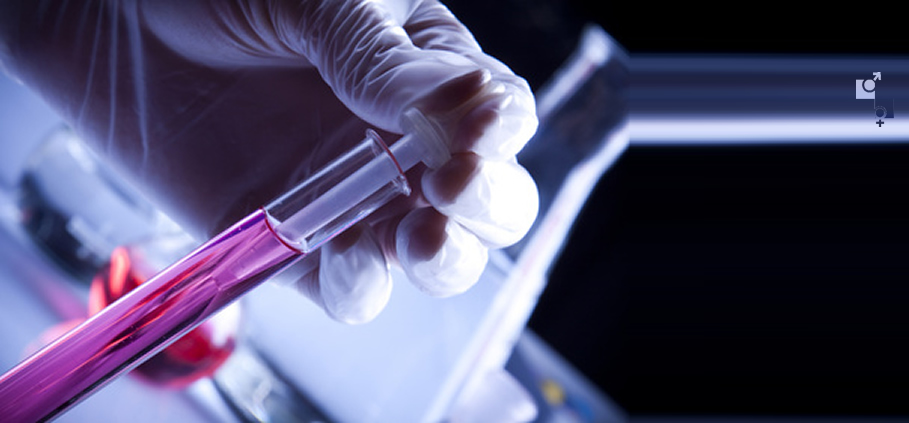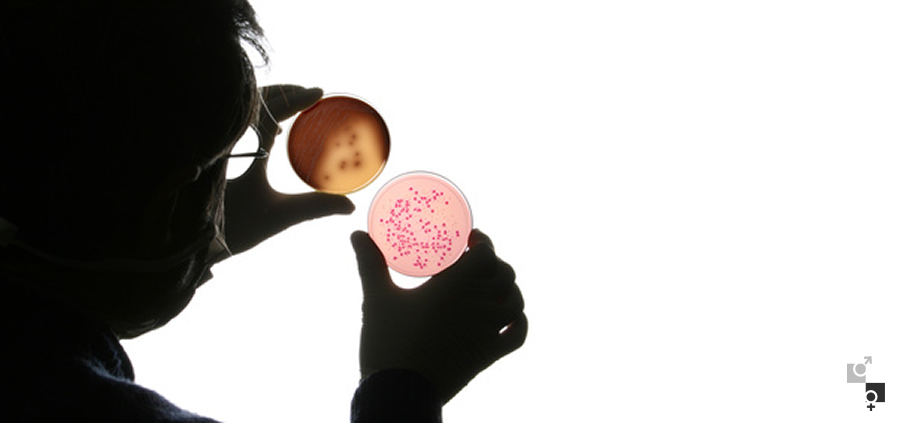Urinary Tract Infections & Recurrent Urinary Tract Infections
Our urinary system includes the kidneys, the ureters, the urinary bladder and the urethra, all of which play an important role in the rejection of wastes from our body. Infections are pathological conditions of our urinary system and usually occur when bacteria enter our organism through the urethra and start multiplying in the urinary bladder.
Any part of the urinary system can be affected, but in most cases the infection affects the lower urinary system, the urinary bladder and the urethra.
Women are in higher risk of developing a urinary tract infection than men, and the main reason for that is the female anatomy. Research has shown that almost 50% of women report having suffered from urinary tract infection at least once in their lifetime. Most women who suffer from cystitis often have infection of the upper urinary system simultaneously. Even among people suffering from diseases that weaken the immune system, such as diabetes mellitus, it is women, rather than men, who run a higher risk of developing asymptomatic bacteriuria. The women who often manifest recurrent urinary tract infections can be divided in two major categories: a. young, sexually active women and b. postmenopausal women who, due to estrogen deficit, they undergo changes in the urinary system, which result in increased susceptibility to infections. Furthermore, the appearance of urinary tract infections in women is highly connected with their lifestyle and their sexual activity, such as:
- -The use of birth control methods (spiral, diaphragm, spermicides etc.) increases the risk of urinary tract infection.
- -The use of condoms which, because of the lubricants they contain, may irritate the vagina. Alternatively, the woman may be allergic to the material of which the condom is made.
- -Tub baths.
- -The frequent use of special soaps for the sensitive area.
- -The improper use of towels and seats in beaches, gyms or areas where proper hygiene and cleanness cannot be achieved.
- -The lack of everyday personal hygiene in the perigenital area.
- -The wrong way of wiping the anus, which should be performed from front backwards and not vice versa, otherwise bacteria existing in the gastroenteric tube (E coli) are transferred in the urethral area.
- -The every day use of sanitary pads and the improper use of tampons (tampons must be changed frequently).
- -Lack or insufficient cleansing of our clothing (continuous use of already used underwear, pantyhose/tights etc.).
- -The use of synthetic underwear and tight clothes which withhold humidity and create the proper environment for the development of bacteria.
- -The bad habit that many women have to suspend urination due to lack of or unclean toilet, a fact that results in the development of microbes inside the urinary bladder.
- -The sudden increase of sexual activity.
- -The frequent change of sexual partner.
- -Sexual intercourse through the anus.
Pregnant women are no more prone to getting urinary tract infections than other women, but, due to the hormonal changes in their organism and the relocation of the urinary system the infection can more easily affect the kidneys. They should also be extra careful because, especially in the first term of pregnancy the development of urinary tract infection may cause severe damage to the foetus. This is the main reason why doctors suggest regular urine test during pregnancy.
Men usually start manifesting urinary tract infections after the age of 50, when problems of the prostate start appearing. Therefore the possibility of urine flow obstruction should be examined, as it may be due to a prostatic inflammation of hyperplasia etc. Besides, more susceptible to urinary tract infections are men with phimosis, men who have anal sex or men whose sexual partner suffers from urinary tract infection. Urinary tract infections in men are connected with chronic bacterial prostatitis, a condition with difficult and long-lasting therapy, while in men of older age it is often connected with acute bacterial prostatitis, which may have serious complications if not treated promptly.
Urinary tract infections may affect also children. Many boys, in the first 6 months of their life may appear urinary tract infection due to congenital abnormalities in their urinary system. Girls manifest urinary tract infections more frequently at the age of 2-3 years. Sometimes the children run the danger to have kidney scars as opposed to adults, which is due to the fact that mature kidneys of adults are more difficult to get scarred. Also, in 30-50% of the cases, urinary tract infections in children are caused by vesicoureteral reflux. The symptoms of UTI in children can often be ignored or attributed to another disorder. In case the child or infant manifests irritability, lack of appetite, vomiting or diarrheas, inexplicable fever that does not recede, incontinence or changes in the urinary pattern, or if he/she is not thriving, we should consult our pediatrician and report these symptoms.
Other predisposition factors possibly responsible for urinary tract infections are:
- -Patients with neurological or mobility problems
- -Patients who have undergone cysteoscopy or surgical operation in the urinary system
- -Functional disorders and anatomical deformities of the urinary system
- -Incontinence (of urine and faeces)
- -The use of urocatheters for a prolonged time period
- -The reduced intake of fluids
Urinary tract infections may be persevering and annoying. However, more serious complications will occur if the infection progresses and spreads to the kidneys. Urinary track infection recurrences often cause a lot of stress, and highly affect the quality of life and every day routine of the individual, and occasionally lead some patients to obsessive thoughts that they may be suffering from another disease, such as cancer etc.
In most cases (80-85%) urinary tract infections are caused by Escherichia coli (E. coli) bacterium which is found in the gastroenteric tube. A smaller percentage (~10%) of urinary tract infections is caused by the saprophyticus staphylococcus and is mainly observed in the summer. In very rare cases urinary tract infections are caused by microbes like klebsiella or proteus etc., and concern recurrences or high-risk complicated urinary tract infections that may cause renal failure, sepsis and even death. This is the case of conditions such as urethral or ureteral stricture, urinary bladder lithiasis, vesicoureteral reflux, urinary system cancer, neurogenic bladder and the anatomical abnormalities of the kidneys.
The commonest symptoms experienced by a urinary tract infection patient are:
- -Frequent urination and intense urge to urinate
- -Burning feeling during urination
- -Dysuria
- -Nycturia
- -Blood in the urine
- -Milky or cloudy urine
- -Smelly urine
- -Increased vaginal discharge in women
- -Itching
- -Pelvic pain in women
- -Rectal pain in men
- -Weakness and loss of appetite
Also, more rarely there can be pain during sexual intercourse, pain in the penis, in the lumbar area (area between the chest and the sacrum), vomiting, shivers and high fever.
We could say that urinary tract infections are divided in 5 major categories:
- >Asymptomatic Bacteriuria, when the patient does not have any symptoms, yet the urine culture is positive and a bacterium is identified. There is no need for treatment in healthy individuals. On the contrary, medical treatment must be given to people who suffer from diabetes mellitus, polycystic kidney disease, functional disorders or anatomical abnormalities of the urinary system and to individuals that are about to undergo urological surgery. video video2
- •Cystitis is the infection of the urinary bladder observed very often in women due to their anatomy, and most specifically the proximity of the urethral opening to bacterial sources from the anus and the vagina. It is usally caused by Escherichia coli (E. coli) bacterium found in the gastroenteric tube. Medical treatment is necessary, as well intake of increased quantity of fluids from the mouth.
There are various types of cystitis:
- •Acute cystitis
It is the commonest form of urinary infection and is especially observed with women, while in men it is usually secondary infection. The symptoms are frequent urination, burning sensation upon urination and pyuria. In severe cases there is also hematuria and rarely fever (in this case the infection has been spread to the kidney or the prostate). It is treated with administration of medication. video
- •Chronic cystitis
When the acute cysticis turns chronic due to ineffective treatment and poor hygiene. It has mild symptoms, such as mild pain, frequent urination, pain in the low abdomen. The symptoms are much milder than those of acute cystitis. Treatment is via administration of medication. It is also imperative that there be correct diagnosis and treatment of the agent that causes or sustains the condition. video
- •Interstitial cystitis
The causing agents of this type of cystitis are unknown. The symptoms are persistent and intense. There is no evidence in the urine and the condition does not remit with the usual treatment, on the contrary it is difficult and painful.
- •Alcaline Encrusting Cystitis
A bacterial infection of the urinary bladder caused by urea-splitting organisms. These change the Ph of the urine into alkaline and cause calcification of bladder areas, resulting in the creation of crystalic and calcareous depositions in the bladder.
- •Actinic cystitis
A result of urinary bladder radiotherapy which damages on the bladder walls resulting in reduced bladder capacity, frequent urination and intense hematuria.
- •Cystic Cystitis
A rare form of cystitis, characterized by the creation of small cysts in the mucosa and the submucosa. It is caused by various bacterial agents.
- •Eosinophilic cystitis
Another rare entity. It is probably an immunological reaction of the bacterial agent and is characterized by eosinophil concentration in the bladder mucosa.
- >Urethritis is the infection of the urethra and is caused by a gastroenteric bacterium transferred from the anus. Due to the proximity of the female urethra to the vagina, another possible cause of urethritis is the existence of sexually transmitted diseases (STDs), such as genital herpes, gonorrhea, Chlamydia etc. video
Urethritis is divided in two major categories:
- •Gonococcal Urethritis
It is a sexually transmitted disease and is caused by Gram (+) diplococcus, N. Gonorrhoeae. It can also be transmitted through the mouth when the pharynx has been infected. The classic symptoms of the condition are urethral discharge and a burning sensation upon urination. Treatment consists of administration of medication for both partners.
- •Non gonococcal urethritis
It is the commonest sexually transmitted disease. Urethral discharge and dysuria are the commonest symptoms observed. However, the biggest problem of the disease, further to its possible severe complications, is its vast expansion. Its treatment is medication administration, imperative for both partners.
- >Pyelonephritis is an infection observed in the kidneys. In this case it should be examined whether there is distension or pus in the pelvis and the ureters, as well as the existence of abscesses in the kidneys. Diagnosis requires more specialized tests and treatment must be immediate.
There are various types of pyelonephritis and secondary renal conditions:
- •Acute pyelonephritis
It is the appearance of a bacterial agent in the kidney. Symptoms may be from very intense to non-existent. The patient may have fever, shaking chills, urination disorders, pain and burning sensation upon urination, nausea and vomiting. video video2
- •Chronic pyelonephritis
When acute pyelonephritis becomes chronic. It is possibly caused by the improper therapeutic treatment of acute pyelonephritis and the persistence of the agent which caused the acute infection. This type of pyelonephritis is the most severe, as it results in renal failure and renal hypertension. Treatment focuses in the effort to inhibit the “course of the disease”. video video2
- •Pyonephrosis
It is the collection of bacteria in the kidney and the creation of a cavity full of pus. The symptoms are very intense, and include fever, shaking chills and acute pain in the infected area. Treatment is always the surgical excision of the damaged kidney. video video2
- •Renal tuberculosis
This condition is secondary. Primary infection may have occurred many years earlier. Some patients may present high blood pressure. Treatment of this condition is surgical.
- •Renal abscesses and carbuncle
Both conditions are infections of the renal parenchyma and the commonest bacterial cause is staphylococcus. The symptoms may be high fever and kidney distension. Treatment may be administration of medication or syrgical operation, based on the severity of the condition and the damage of the kidney. video video2
- •Perirenal abscess
Infection located in the perirenal fat. Its symptoms are fever, shaking chills, tenderness, leucocytosis and sometimes renal failure. Treatment is usually surgical.
- •Renal ecchinococcal cyst
It is a parasitic disease rarely observed in the kidney. The man is infected with the consumption certain foods (e.g. vegetables) which contain the warm ova. The symptoms are mild pains in the pelvic/lumbar area and random distention in the renal area. Treatment is always surgical.
- >Recurrent Urinary Tract Infections are defined as having frequently repeated infections (3 or more incidents in a 12-month period) and are caused either by the same causative factor (reinfections) or a different causative factor (separate infections-recurrences). Any case of recurrent urinary tract infection should be examined by the doctor in order for possible underlying conditions or diseases of the urinary system, or beyond it, to be detected. Recurrent urinary tract infections usually occur in people with functional disorders or anatomical abnormalities of the urinary system. Treatment is long-lasting and the exact cause of the infection should be identified.
Treatment of the infections depends on the age of the patient, the frequency of occurrences, the renal function, and the existence of stones or abnormalities in the urinary system. The main way of treatment is the use of antibiotics, which are classified in two categories: 1) Antibiotics and 2) Chemotherapeutics.
In many cases, the arbitrary selection of the antibiotic by the patients themselves as well as the drug abuse leads to the condition failing to recede and the microbe becoming resistant to the specific medication.
The selection of the antibiotic and the length of the treatment course should be decided by the urologist, taking into account the patient’s medical history, in order for the medical treatment to be effective, prevent recurrences and avoid the development of antimicrobial resistance, which is the biggest disadvantage and concern when treating urinary tract infections. In certain cases it is possible that the patient should be hospitalized in order for the infection to be treated effectively. video video2



